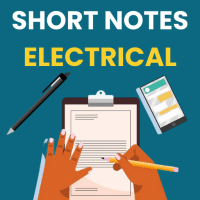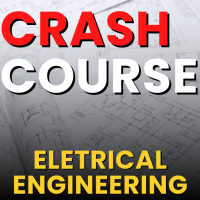Electrical Engineering (EE) Exam > Electrical Engineering (EE) Questions > Discussion on Semiconductor physics - Analo...
Start Learning for Free
Discussion on Semiconductor physics - Analog Electronics, GATE
Most Upvoted Answer
Discussion on Semiconductor physics - Analog Electronics, GATE?
Semiconductor Physics - Analog Electronics, GATE
Introduction:
Semiconductor physics is a fundamental topic in analog electronics and is a core concept in the GATE (Graduate Aptitude Test in Engineering) exam for Electrical Engineering. Understanding semiconductor physics is crucial for designing and analyzing electronic devices such as diodes, transistors, and integrated circuits.
Key Concepts:
1. Semiconductors: Semiconductors are materials that have electrical conductivity between conductors (metals) and insulators. The most commonly used semiconductor material is silicon (Si), but other materials like germanium (Ge) and gallium arsenide (GaAs) are also used. The behavior of semiconductors is governed by quantum mechanics.
2. Energy Bands: In semiconductors, the energy levels of electrons are distributed in energy bands. The valence band contains electrons that are tightly bound to atoms, while the conduction band contains electrons that are free to move. The energy gap between the valence and conduction bands is called the band gap.
3. Doping: Doping is the process of intentionally introducing impurities into a semiconductor crystal to alter its electrical properties. Two types of doping are used:
- N-type doping: In N-type doping, a small amount of impurity atoms (such as phosphorus or arsenic) with extra valence electrons are added to the semiconductor, creating an excess of negatively charged electrons.
- P-type doping: In P-type doping, impurities (such as boron or gallium) with fewer valence electrons than the atoms of the semiconductor are added. This creates "holes" or positive charges in the crystal lattice.
4. P-N Junction: A P-N junction is formed by bringing together a P-type and an N-type semiconductor. At the junction, electrons from the N-side diffuse to the P-side, recombining with holes. This creates a depletion region where there are no mobile charges. The P-N junction acts as a diode, allowing current flow in one direction while blocking it in the reverse direction.
5. Transistors: Transistors are three-layer semiconductor devices used for amplification and switching. The two most commonly used types are the bipolar junction transistor (BJT) and the field-effect transistor (FET). BJT consists of two P-N junctions, while FET has a channel where the current flows based on the electric field.
Conclusion:
Understanding semiconductor physics is essential for analyzing and designing analog electronic circuits. Key concepts like energy bands, doping, P-N junctions, and transistors play a crucial role in understanding the behavior of electronic devices. With a strong grasp of semiconductor physics, one can excel in the GATE exam and in the field of electrical engineering.
Introduction:
Semiconductor physics is a fundamental topic in analog electronics and is a core concept in the GATE (Graduate Aptitude Test in Engineering) exam for Electrical Engineering. Understanding semiconductor physics is crucial for designing and analyzing electronic devices such as diodes, transistors, and integrated circuits.
Key Concepts:
1. Semiconductors: Semiconductors are materials that have electrical conductivity between conductors (metals) and insulators. The most commonly used semiconductor material is silicon (Si), but other materials like germanium (Ge) and gallium arsenide (GaAs) are also used. The behavior of semiconductors is governed by quantum mechanics.
2. Energy Bands: In semiconductors, the energy levels of electrons are distributed in energy bands. The valence band contains electrons that are tightly bound to atoms, while the conduction band contains electrons that are free to move. The energy gap between the valence and conduction bands is called the band gap.
3. Doping: Doping is the process of intentionally introducing impurities into a semiconductor crystal to alter its electrical properties. Two types of doping are used:
- N-type doping: In N-type doping, a small amount of impurity atoms (such as phosphorus or arsenic) with extra valence electrons are added to the semiconductor, creating an excess of negatively charged electrons.
- P-type doping: In P-type doping, impurities (such as boron or gallium) with fewer valence electrons than the atoms of the semiconductor are added. This creates "holes" or positive charges in the crystal lattice.
4. P-N Junction: A P-N junction is formed by bringing together a P-type and an N-type semiconductor. At the junction, electrons from the N-side diffuse to the P-side, recombining with holes. This creates a depletion region where there are no mobile charges. The P-N junction acts as a diode, allowing current flow in one direction while blocking it in the reverse direction.
5. Transistors: Transistors are three-layer semiconductor devices used for amplification and switching. The two most commonly used types are the bipolar junction transistor (BJT) and the field-effect transistor (FET). BJT consists of two P-N junctions, while FET has a channel where the current flows based on the electric field.
Conclusion:
Understanding semiconductor physics is essential for analyzing and designing analog electronic circuits. Key concepts like energy bands, doping, P-N junctions, and transistors play a crucial role in understanding the behavior of electronic devices. With a strong grasp of semiconductor physics, one can excel in the GATE exam and in the field of electrical engineering.
Community Answer
Discussion on Semiconductor physics - Analog Electronics, GATE?
The notes are very detailed and self explainatory.

|
Explore Courses for Electrical Engineering (EE) exam
|

|
Question Description
Discussion on Semiconductor physics - Analog Electronics, GATE? for Electrical Engineering (EE) 2025 is part of Electrical Engineering (EE) preparation. The Question and answers have been prepared according to the Electrical Engineering (EE) exam syllabus. Information about Discussion on Semiconductor physics - Analog Electronics, GATE? covers all topics & solutions for Electrical Engineering (EE) 2025 Exam. Find important definitions, questions, meanings, examples, exercises and tests below for Discussion on Semiconductor physics - Analog Electronics, GATE?.
Discussion on Semiconductor physics - Analog Electronics, GATE? for Electrical Engineering (EE) 2025 is part of Electrical Engineering (EE) preparation. The Question and answers have been prepared according to the Electrical Engineering (EE) exam syllabus. Information about Discussion on Semiconductor physics - Analog Electronics, GATE? covers all topics & solutions for Electrical Engineering (EE) 2025 Exam. Find important definitions, questions, meanings, examples, exercises and tests below for Discussion on Semiconductor physics - Analog Electronics, GATE?.
Solutions for Discussion on Semiconductor physics - Analog Electronics, GATE? in English & in Hindi are available as part of our courses for Electrical Engineering (EE).
Download more important topics, notes, lectures and mock test series for Electrical Engineering (EE) Exam by signing up for free.
Here you can find the meaning of Discussion on Semiconductor physics - Analog Electronics, GATE? defined & explained in the simplest way possible. Besides giving the explanation of
Discussion on Semiconductor physics - Analog Electronics, GATE?, a detailed solution for Discussion on Semiconductor physics - Analog Electronics, GATE? has been provided alongside types of Discussion on Semiconductor physics - Analog Electronics, GATE? theory, EduRev gives you an
ample number of questions to practice Discussion on Semiconductor physics - Analog Electronics, GATE? tests, examples and also practice Electrical Engineering (EE) tests.

|
Explore Courses for Electrical Engineering (EE) exam
|

|
Signup for Free!
Signup to see your scores go up within 7 days! Learn & Practice with 1000+ FREE Notes, Videos & Tests.


















